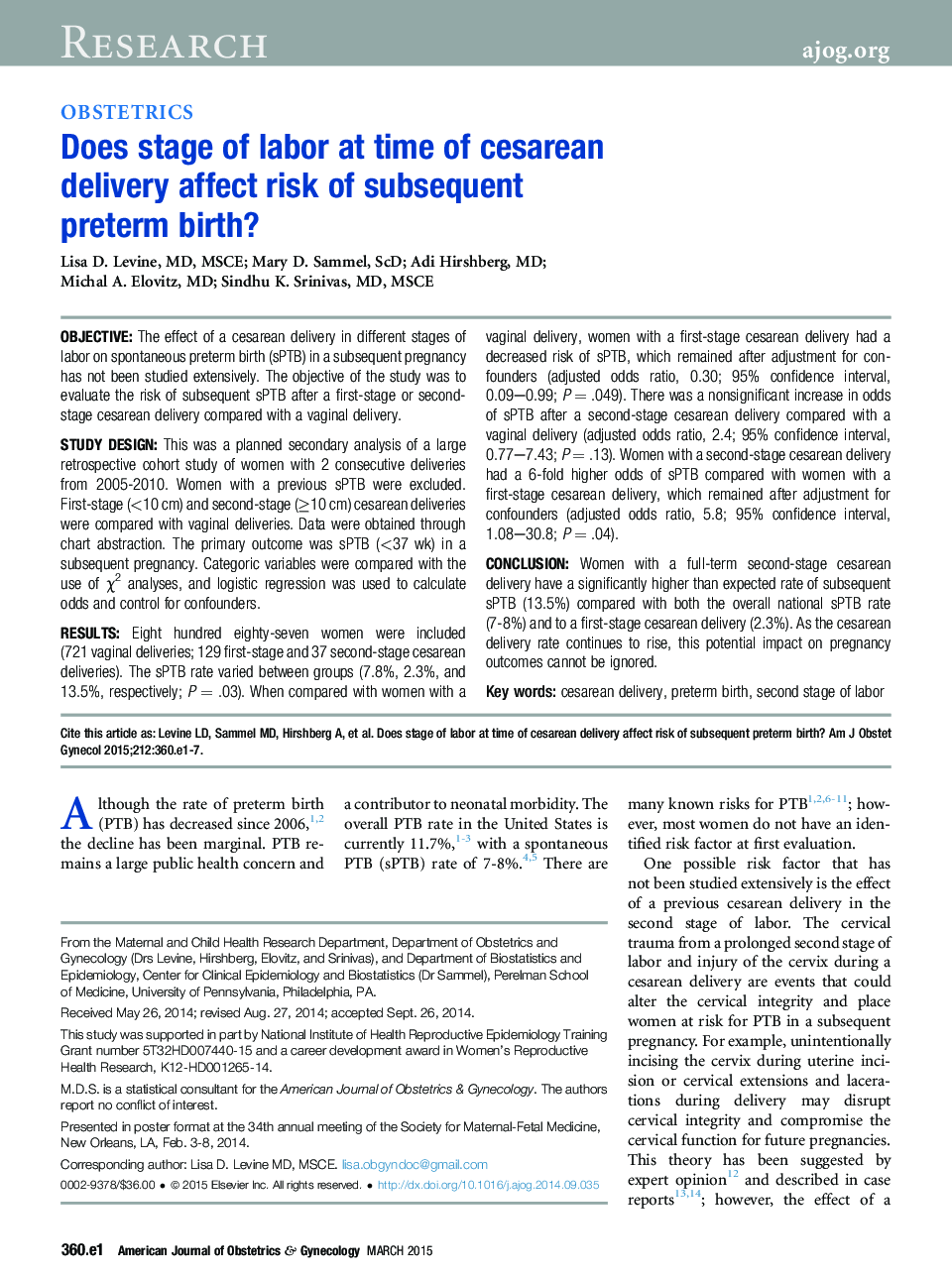| کد مقاله | کد نشریه | سال انتشار | مقاله انگلیسی | نسخه تمام متن |
|---|---|---|---|---|
| 6144359 | 1594908 | 2015 | 7 صفحه PDF | دانلود رایگان |
ObjectiveThe effect of a cesarean delivery in different stages of labor on spontaneous preterm birth (sPTB) in a subsequent pregnancy has not been studied extensively. The objective of the study was to evaluate the risk of subsequent sPTB after a first-stage or second-stage cesarean delivery compared with a vaginal delivery.Study DesignThis was a planned secondary analysis of a large retrospective cohort study of women with 2 consecutive deliveries from 2005-2010. Women with a previous sPTB were excluded. First-stage (<10 cm) and second-stage (â¥10 cm) cesarean deliveries were compared with vaginal deliveries. Data were obtained through chart abstraction. The primary outcome was sPTB (<37 wk) in a subsequent pregnancy. Categoric variables were compared with the use of Ï2 analyses, and logistic regression was used to calculate odds and control for confounders.ResultsEight hundred eighty-seven women were included (721 vaginal deliveries; 129 first-stage and 37 second-stage cesarean deliveries). The sPTB rate varied between groups (7.8%, 2.3%, and 13.5%, respectively; P = .03). When compared with women with a vaginal delivery, women with a first-stage cesarean delivery had a decreased risk of sPTB, which remained after adjustment for confounders (adjusted odds ratio, 0.30; 95% confidence interval, 0.09-0.99; P = .049). There was a nonsignificant increase in odds of sPTB after a second-stage cesarean delivery compared with a vaginal delivery (adjusted odds ratio, 2.4; 95% confidence interval, 0.77-7.43; P = .13). Women with a second-stage cesarean delivery had a 6-fold higher odds of sPTB compared with women with a first-stage cesarean delivery, which remained after adjustment for confounders (adjusted odds ratio, 5.8; 95% confidence interval, 1.08-30.8; P = .04).ConclusionWomen with a full-term second-stage cesarean delivery have a significantly higher than expected rate of subsequent sPTB (13.5%) compared with both the overall national sPTB rate (7-8%) and to a first-stage cesarean delivery (2.3%). As the cesarean delivery rate continues to rise, this potential impact on pregnancy outcomes cannot be ignored.
Journal: American Journal of Obstetrics and Gynecology - Volume 212, Issue 3, March 2015, Pages 360.e1-360.e7
